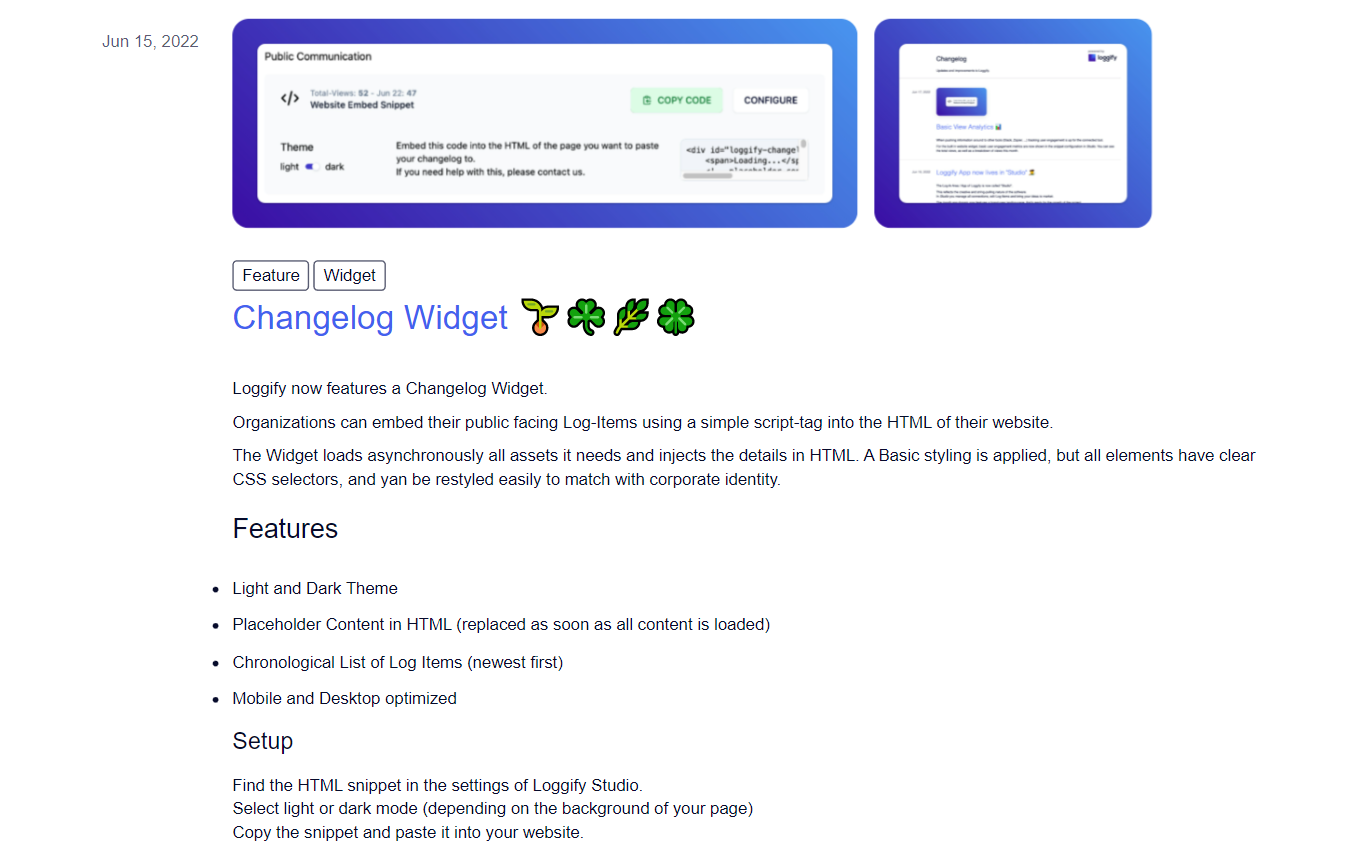Release notes are the footprints of a product’s development. They are very productive for information, communication, and marketing purposes. However, one common issue with release notes is that they’re generally boring and less interactive. This completely derails their purpose of informing the team and audience about the upcoming updates. Your passionate users want to dive deep into what’s new or upcoming and you have to make sure that your release notes are the go-to place for this.
To increase engagement with release notes, you have to make them fun and exciting. But what are the key elements of an engaging release note? Below we discuss some practices through which you can increase the engagement of your release notes.
Design and Formatting

The design of the release notes is the first and foremost impression that hooks a visitor's attention and converts them into active readers. There is no universal design for release notes; most companies produce a unique design to cater to their specific needs. However, the following are some standard practices that are followed to create the best design for release notes:
- It should represent the brand’s personality. Examples include UNICEF , which follows a simple design, and Supercell , which follows a colorful and graphical approach for their release notes. Figure out what kind of brand tone you have and put them in designing release notes.
- It should be interactive and user-friendly. Most companies like Apple follow a minimalist design while others such as Amazon are more interactive and allow easy and detailed navigation based on categories, products, and dates.
- It should relate to a company’s overall design. Your product and website design must reflect in your release notes formatting.
Textual Guidelines
The release notes' text is fundamental because it delivers valuable information while increasing the reader’s interest and engagement. It should be created while keeping the following key points in mind.
- When writing the texts for release notes, writers must be aware of the right tone. It is the one that represents the company’s brand and values.
- Release notes must be short and relevant to their readers. They must inform and educate their readers on targeted topics and thus serve their specific purpose. Irrelevant or inappropriate discussions reduce client engagement which isn’t productive for any business. Although you can provide a context of previous updates if it strengthens your point.
- The text of the release notes should not be comprised of too much jargon. These are technical words used by experts in specific disciplines and are challenging for a normal audience to comprehend (unless your audience is an expert in the subject matter). The release notes are for the general audience, so the text must be plain and simple. Thus more people can easily understand what’s written in the release notes.
Segmentation
Segmentation is the process of organizing release notes into different groups and categories for quick and easy navigation. It is a great way to increase the engagement and interaction of release notes, especially for large companies with a wide range of stakeholders who deal in numerous products and services. For example, one segment can talk about the new additions and the other segment can list the changes made, etc. Another way would be to segment the release notes based on various categories or sections of the product. Segment each category so your audience can only read what’s relevant to them. It depends on you so use it well!
Twitter uses one main segment of dates and several sub-segments for detailed information. Amazon uses multiple segments of products and services categories to classify its release notes. Also, some companies create one release note for all their products while other companies develop multiple release notes for a unique product category. This segmentation is more decentralized and targets a specific audience.
One important tip: Segmenting everything into subcategories can be a bad thing if you don’t know how to organize the release notes and declutter your release notes page. The reader should be able to easily navigate to what’s important be it by segmenting everything or providing a complete release notes file. It depends on the type of your company!
Tags, Labels, and Links

Release notes generally comprise document names, product names, release numbers, release note dates and versions, etc. Furthermore, tags and labels are attached with release notes to improve the classification of updates for the relevant audiences. For instance, a tag of "Bug Fixes" will be more appropriate for developers, and a tag of "New Features" will be more relevant for end-users. Thus tagging can make release notes more engaging for readers. Release notes may also contain external/internal links to detailed summaries and reports for boosting engagement.
Infographics

Infographics are visual representation tools that boost clients’ engagement by simplifying information for easy understanding. Many businesses use attractive visuals as infographics with their release notes. This inclusion increases communication effectiveness and improves the company's visibility and credibility amongst its stakeholders. The following are the most commonly used graphics tools:
- Images – The use of images is pretty common with release notes. This is because the human brain can interpret images much more quickly than texts. Also, people remember this information for a longer-term than what is received by reading or hearing. Businesses use unique logos to build their brand awareness.
- Videos – Many businesses use videos with their release notes because they enable them to deliver their messages quickly and effectively. Videos can also build a social and emotional connection between the clients and their organization. Thus, using videos with release notes can not transfer technical information but also a business’s shared values.
- Charts – Charts are similar to images in terms of effective communication. Especially when comparing different sets of information, charts are very productive. Therefore some businesses use charts with their release notes to issue comparative analyses.
- Emojis – Emojis are an independent, non-verbal, and universal language that adds richness and emotions to a communication. Businesses use Emojis with their release notes as informal tools to communicate in a fun and light-hearted manner.
- Gifs – Gifs are yet another popular infographics tool used with release notes. There are several reasons for its popularity. These include a higher retention and conversion rate, effective communication, and low production costs.
Announcements and Notifications



